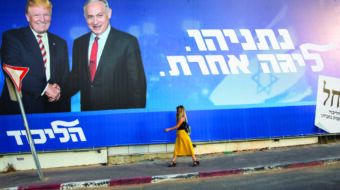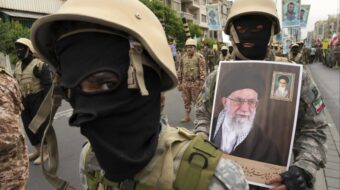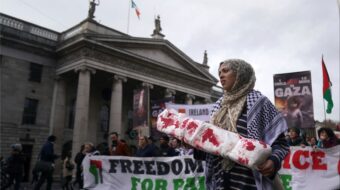Analysts of the West Papua conflict have observed an escalation in violent incidents through the year, with a pronounced uptick since May. Journalists and members of the West Papua community themselves have previously warned that the situation is deteriorating, with the Australia West Papua Association writing an open letter to then-Prime Minister Kevin Rudd in March, calling for him to raise human rights issues with the Indonesian government.
West Papuans are being “arrested for simply taking part in peaceful rallies”, the letter said, and urged Rudd to pressure Indonesia to release political prisoners, as well as cut Australian military ties with the Indonesian special forces unit Kopassus.
Between July of 2010 and March of this year, fourteen shootings occurred around Freeport’s copper and gold mines, including one that saw the killing of Drew Grant, an Australian mine technician.
Following Indonesia’s independence from The Netherlands in 1949, West Papua continued to be administered by the Dutch until Indonesia invaded in 1961. The Netherlands resisted West Papua’s full absorption into Indonesia, but were pressured by the United States and Australia to proceed with decolonization. Soon passing under the authority of a United Nations administration, a referendum on the territory’s future produced results in favor of integration. However, independence activists dispute the vote’s legitimacy and have continued to engage in armed resistance, principally through the Free Papua Movement (OPM).
Earlier this month, police sources reported the killing of four civilians by OPM forces in the Paniai Regency, in addition to shootings on police officers and soldiers. In July, there were shootings on vehicles outside Jayapura that killed four army personnel, but local OPM commander Lambert Pekikir denied involvement by their forces. Two other soldiers were killed in July by unknown attackers.
Meanwhile, the West Papua Advocacy Team has collected a number of accounts from June detailing a rise in Indonesian security force operations. These include accounts of detention of civilians without identification; residents being “forced to clear their gardens and prepare landing positions” for military aircraft; the destruction of two churches and twelve houses; and the rape of a pregnant woman. They were said to have occurred in the Puncak Jaya Regency, an inner highland district.
Low-level armed resistance in West Papua has existed for decades, prompting Indonesia to maintain military and police forces in the region. The Indonesian government has significant economic interests in West Papua, such wood, palm oil and natural gas resources, in addition to gold and copper. Indonesian security forces also benefit from providing protection services.
Human rights organizations continue to condemn the Indonesian military for abuses, with civilians sympathetic to the OPM facing indiscriminate violence and imprisonment.
Papuans have rejected Indonesia’s autonomy measures as mere symbolic, while officials from Indonesia’s London embassy emphasized in 2009 that “all human rights abuses will be duly investigated [and] abusers of human rights will be punished.” In January, soldiers who tortured two Papuan farmers received sentences of less than a year.
It is estimated that more than 100 thousand Papuans have died as a result of the Indonesian occupation since 1962.
Photo: Papuanese students protest, demanding that Freeport-McMoran Copper and Gold Mine Inc. halt their operations in West Papua and asking the Indonesian government to stop sending military aid. (Firdia Lisnawati/AP)
Note from the editor: While the indigenous peoples of the Melanesian island known as New Guinea have been there for over 40,000 years, since the 16th century the island has been subjected to repeated colonization and artificial divisions by several colonial powers, including: Spain, The Netherlands, Germany, Australia, and Indonesia.
The term West Papua may refer to the province of West Papua or to the region of the western half of the island.
The eastern half of the Pacific island of New Guinea is the country of Papua New Guinea. The western half of the island is currently made up of two provinces of the country of Indonesia: Papua and West Papua.
The province of Papua comprises most of the western half of the island and nearby islands. Its capital is Jayapura.
The province of West Papua covers the Bird’s Head (Doberai) and Bomberai peninsulas and the surrounding islands of Raja Ampat.












Comments